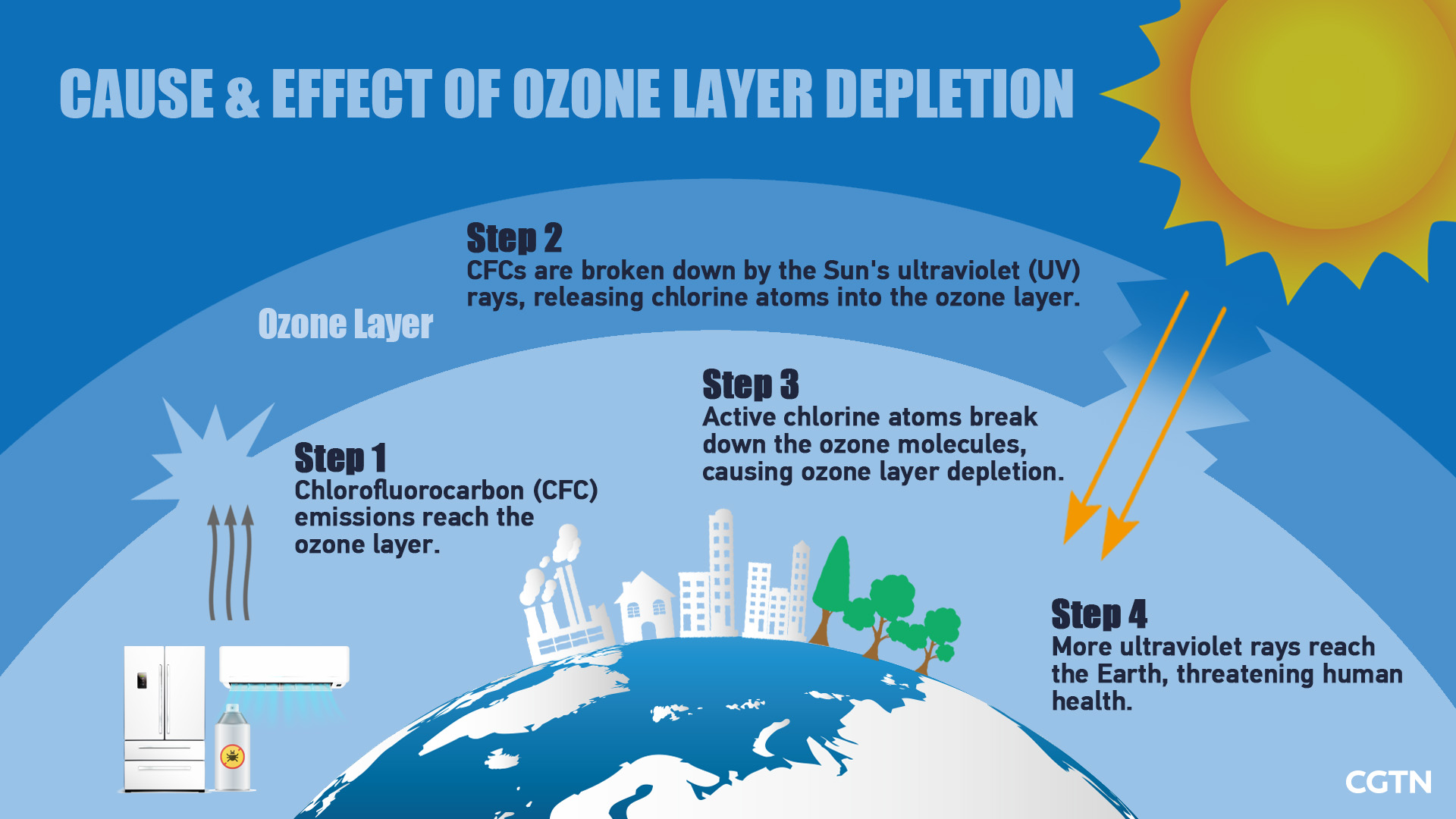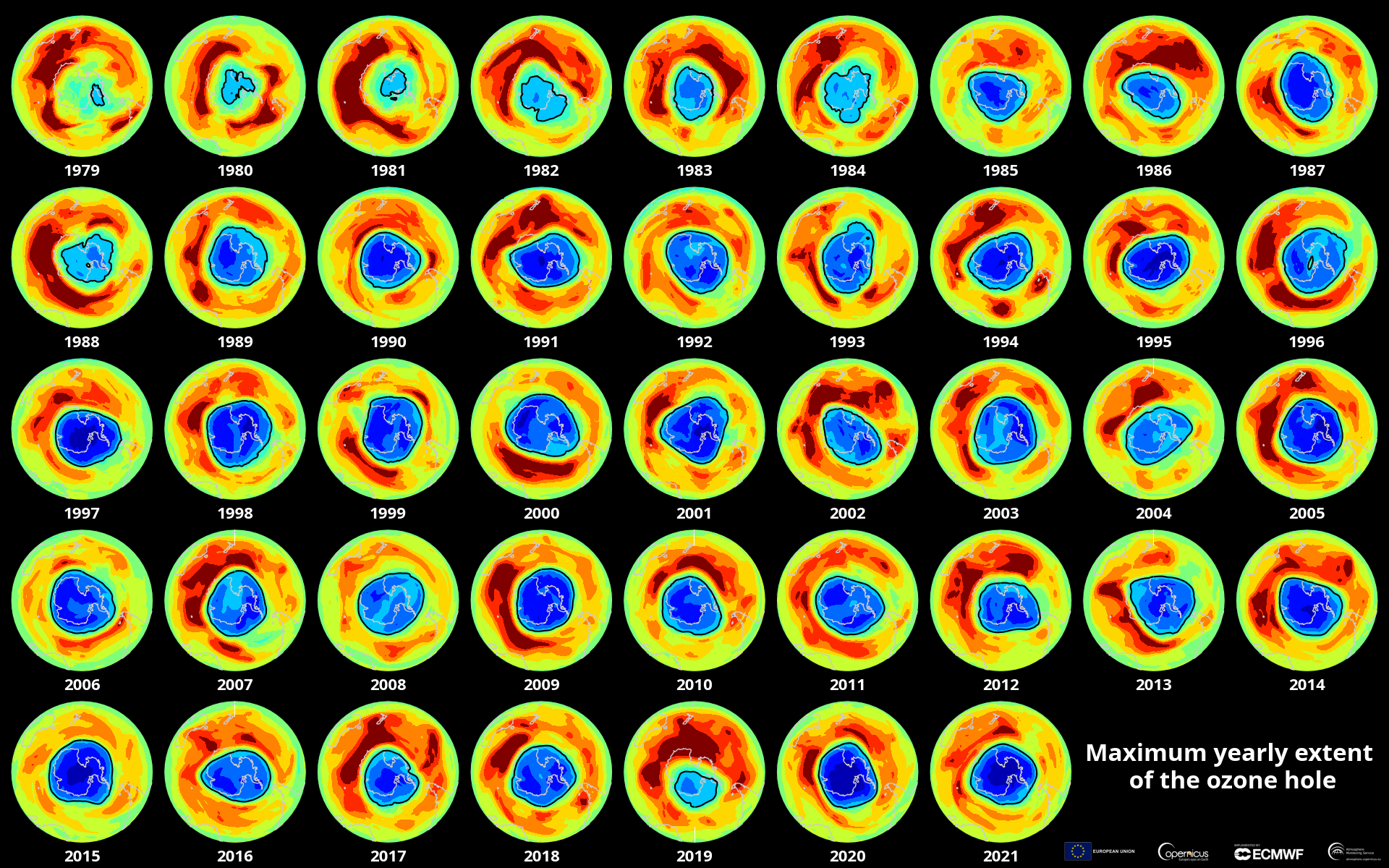On December 19, 1994, the UN General Assembly declared September 16 as the International Day for the Preservation of the Ozone Layer. It was first celebrated the following year, on September 16, 1995 to spread and raise the public awareness about the depletion of the ozone layer. This year's theme is the "Montreal Protocol at 35: global cooperation protecting life on earth."
The ozone layer, which is a fragile shield of gas, plays as a protector of the Earth and helps preserve life on the planet. It is present about 15 to 35 kilometers above the Earth, and reduces the harmful ultraviolet rays reaching the Earth's surface. However, due to the human activities like the use of refrigerators and air conditioners with coolants that contain chlorofluorocarbon (CFC) gases which destroy the ozone layer, a big "hole" was found by a team of English scientists over Antarctica, and this is ozone layer depletion.

Infographic of Cause and Effect of Ozone Layer Depletion. /Designed by CGTN's Li Jingjie
Infographic of Cause and Effect of Ozone Layer Depletion. /Designed by CGTN's Li Jingjie
Besides CFCs, halons and nitrogen oxides also contribute to the depletion of the ozone layer. These chemicals are widely used in traditional fire extinguishers.
According to a report released by United States Environmental Protection Agency, the harmful ultraviolet reaching the earth's surface poses a great threat to people's health, increasing risk of skin cancers, eye cataracts and immune deficiency disorders. Also, the ultraviolet rays affect the physiological and developmental processes of plants, and cause damage to early developmental stages of marine animals.

Maximum yearly extent of the ozone hole. /Copernicus Atmosphere Monitoring Service (CAMS)
Maximum yearly extent of the ozone hole. /Copernicus Atmosphere Monitoring Service (CAMS)
Surprised by the status of the ozone layer, in 1987, the United Nations (UN) brought out an agreement—The Montreal Protocol on Substances that Deplete the Ozone Layer—to phase out these harmful substances. This agreement has been ratified by all UN member countries, and implementation of the Montreal Protocol progressed well in developed and developing countries.
According to the UN, attention focused initially on chemicals with higher ozone-depletion potentials including CFCs and halons. Hydrochlorofluorocarbons (HCFCs), as the second generation of fluorine based gases and a transitional alternative to CFCs, have a more lenient phase-out schedule because of their lower ozone-depleting potential. In 2007, Parties to the Montreal Protocol decided to accelerate the HCFC phase-out schedule for both developed and developing countries, and reached agreement at their 28th Meeting of the Parties on 15 October 2016 in Kigali, Rwanda to phase-down hydrofluorocarbons (HFCs do no harm to the ozone layer, but they contribute to global warming), which brought out the Kigali Amendment. The amendment aims to cut the use of HFCs by more than 80 percent over the next three decades. During the time, scientists are working to find climate-friendly alternatives and technologies that reduce or eliminate dependence on chemicals.
With the joint efforts of all the countries, the ozone hole has shown signs of recovering since the year 2000. Nevertheless, there is still a long way to go. It is urgent for us to find out a better way to protect this thin, but crucially protective layer of gas.
(If you want to contribute and have specific expertise, please contact us at nature@cgtn.com.)

